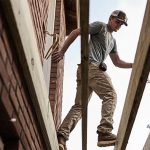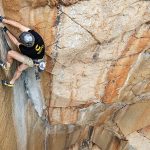Since 1970, the percentage of U.S. children who bike or walk to school has plummeted. During this time, childhood obesity has tripled, and sedentary lifestyles are widely recognized as a major contributing factor. Safe Routes to School is a logical solution.
The movement to create safe routes for kids to walk and bike to school took a big step forward Oct. 24 when the Safe Routes to School National Partnership held its first formal meeting in Washington, D.C.
Forty diverse groups from throughout the U.S. met to identify goals for the national Safe Routes to School movement, and to initiate a productive working relationship with the Federal Highway Administration, which is charged with administering the new Safe Routes to School federal program.
One of the partnership's key objectives is to maximize the effectiveness of this new federal program, which Congress authorized in August as part of the new federal transportation law. Each state will receive a minimum of $1 million a year through 2009 to create projects and programs that make it safer, easier, and more appealing for children to walk and bicycle to school. The federal program budget for this period is $612 million.
Deb Hubsmith, coordinator for the Safe Routes to School National Partnership, said, “There is tremendous enthusiasm for Safe Routes to School in all fifty states. The partnership is a diverse, experienced and growing coalition that is uniquely positioned to work with the Federal Highway Administration, state departments of transportation, and local advocates to ensure the program succeeds.”
Since the transportation bill passed, more than 80 organizations (including bicycling, walking, health, education, and transportation groups, government agencies, and businesses) have joined the Safe Routes to School National Partnership. Partner groups pledge to work together to maximize the effectiveness of Safe Routes to School. There is no charge for organizations or businesses to join.
The Bikes Belong Coalition is the initial sponsor of the Safe Routes to School National Partnership. The League of American Bicyclists and the National Center for Bicycling and Walking provided additional support for the recent meeting.













